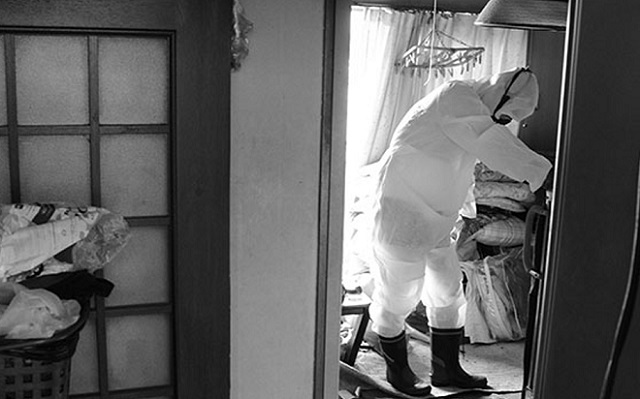
Tokyo, Japan | AFP | The stench of flesh rotting on a sultry day fills the air as cleaner Hidemitsu Ohshima steps into a tiny Tokyo apartment where a dead man lay decomposing for three weeks.
The man, believed to be in his 50s, died alone in a city he shared with tens of millions of other people but no one noticed, making him the latest victim of “Kodokushi” or “dying alone” — a growing trend in ageing Japan.
Decked out in a white protective suit complete with rubber gloves, Ohshima lifts up a futon mattress soaked with the dead man’s bodily fluids, only to uncover a writhing mass of maggots and black bugs.
“Ugh, this is serious,” he says. “You wear protective suits to defend yourself from bugs that may or may not be carrying diseases.”
Kodokushi is a growing problem in Japan, where 27.7 percent of the population is aged over 65 and many people are giving up trying to find partners in middle age, opting instead for a solitary existence.
Experts say a combination of uniquely Japanese cultural, social and demographic factors have compounded the problem.
– Lonely death –
There are no official figures for the number of people dying alone who stay unnoticed for days and weeks but most experts estimate it at 30,000 per year.
Yoshinori Ishimi, who runs the Anshin Net service that cleans up afterwards, believes the true figure is “twice or three times that.”
Modern Japan has experienced sweeping cultural and economic changes in recent decades but demographers say the country’s social safety net has failed to keep pace — with the burden still on the family to look after the elderly.
“In Japan, family has long served as the strong foundation of social support of all kinds,” said Katsuhiko Fujimori, a well-known expert on welfare issues.
“But now things are changing with the rise of single people and the size of the family becoming smaller,” added Fujimori, chief research associate at Mizuho Information and Research Institute.
In the past three decades, Japan has seen the share of single-occupant households more than double to 14.5 percent of the total population, the rise driven mainly by men in their 50s and women in their 80s and older.
Marriage rates are also dropping, with experts saying many men fear their job is too precarious to settle down and start a family and more women entering the workforce and no longer needing a husband to provide for them.
One in four 50-year-old Japanese men has never been married. By 2030, the figure is estimated to rise to one in three.
 The Independent Uganda: You get the Truth we Pay the Price
The Independent Uganda: You get the Truth we Pay the Price


